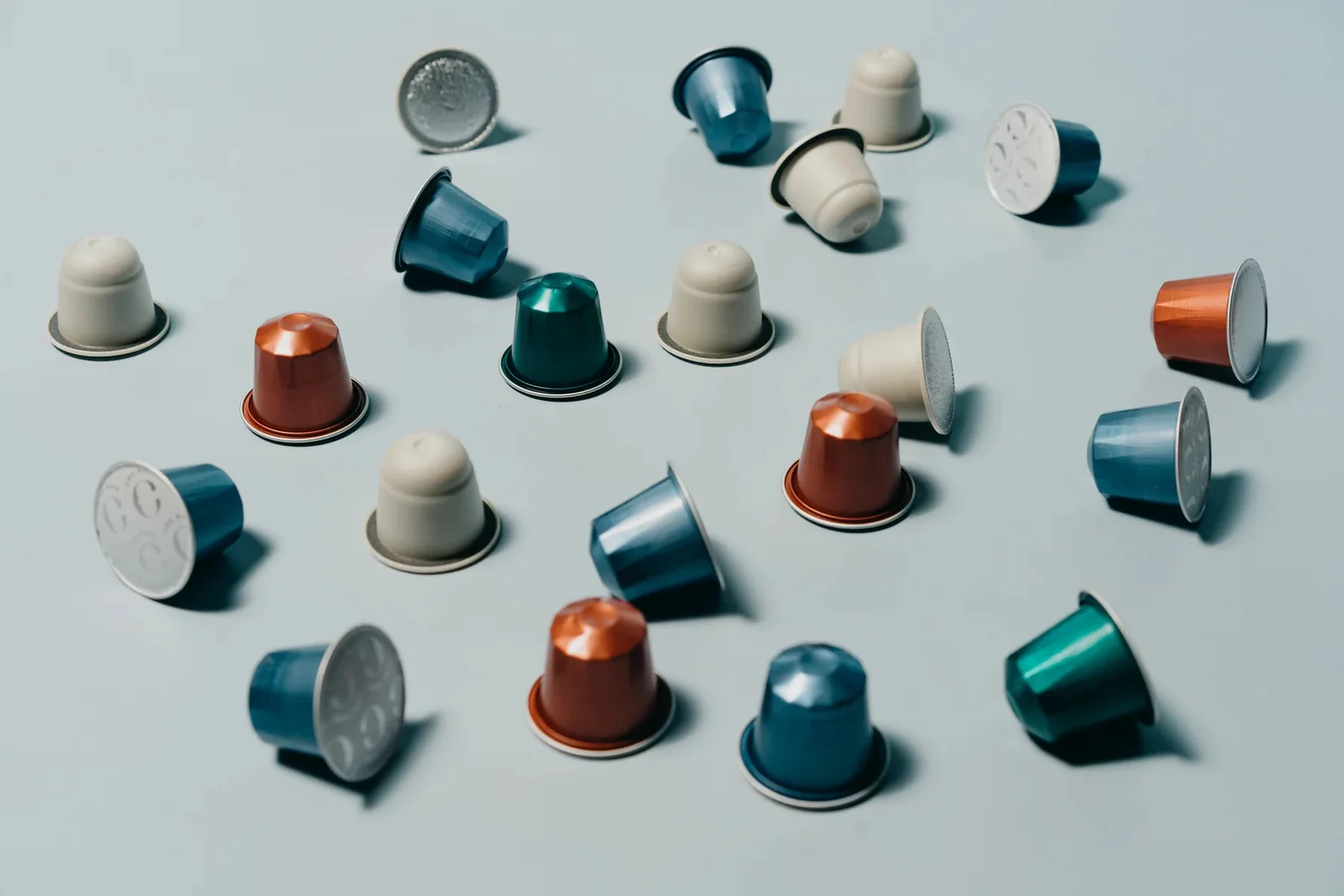Now reading:
A Brief History of the Coffee Capsule
Share

A Brief History of the Coffee Capsule
To say that single-serve coffee has come a long way from those tiny packets of instant coffee is an understatement.
At the present day, coffee lovers are awfully spoilt for choice when it comes to quick and easy ways to enjoy a cuppa, at the ready and in an instant—from freeze-dried coffee, drip bags, to of course, capsule coffee.
Which leads us to wonder, how did capsule coffee come to be?
It may come as a surprise to learn that the idea for capsule coffee has been around for over 40 years, with the first patent being filed in 1976 by former Nestlé employee and Swiss engineer, Eric Favre. After a trip to Italy and finding inspiration from a café that was doing tremendous business selling aerated coffee, Favre got to work trying to figure out the science of how to replicate this type of coffee, which he fancied, in a simpler manner. Being an engineer, he designed a structure that would achieve the coffee output he desired; hence, the acorn-like shape of today’s ever-popular coffee capsules.
However, despite the patent filing, it would take several more years before the first commercial Nespresso machines would hit off the ground.
Beginning in 1986, Nespresso machines became commercially available, and in turn, the coffee capsules as well. The Nespresso C100 looked a lot more like a traditional single group espresso machine, and in a way, you could say it operated like one, too. Despite this breakthrough in coffee design, the business did not pick up, and the whole venture seemed to have ended even before it began.
While it seemed like hope was bleak, Jean Paul Gaillard stepped in as Commercial Director of Nespresso, and he helped turn things around. A key decision made at that time, which has impacted Nespresso until today, was to license the machine’s production to other companies, while placing its focus on the manufacturing and design of the coffee capsules.
Because of this, Nespresso was able to pick up the pace, and its popularity skyrocketed as a result. Seeing Nespresso’s success, it didn’t take long before other companies decided to get into the capsule coffee game. Keurig began offering their K-Cup system in 1998, and other coffee companies began releasing their respective capsule systems as well. Nestlé came out with the Dolce Gusto line in 2006, which provided more varied offerings that encompassed tea and chocolate-based beverages as well.
Today, the coffee capsule market has grown way beyond its humble beginnings. More and more coffee roasters and companies are looking at the capsule system as a new model for the future of coffee as most people spend more time at home nowadays.
Most coffee consumers may not necessarily have the patience to take the longer route of brewing coffee, which is why there are now millions that own a coffee capsule brewing machine at home or in the office—and we’re only talking about personal machine owners here. With a market that only keeps growing, it’s a gold mine of opportunity for coffee roasters around the world to tap into.
This can only mean exciting times ahead. Written by Ananya Mishra













